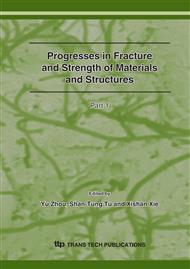p.695
p.699
p.703
p.707
p.711
p.715
p.718
p.722
p.726
Grain Orientation Dependence of Extended Planar Dislocation Boundaries in Cold-Rolled Polycrystalline Aluminium
Abstract:
The dependence on the grain orientation of the alignment of planar dislocation boundaries in plastically deformed metals has been investigated by examining grains of S orientation ({123}<63-4>) in cold-rolled polycrystalline aluminum. For the ideal S orientation the {111} slip plane associated with the highest resolved shear stress lies either at +40° or -40° to the rolling direction in the longitudinal section, with two S variants corresponding to each case. Boundary traces in S orientation grains in the rolled sample were examined by the combined use of electron channeling contrast imaging and electron backscatter diffraction orientation mapping. In each case the +/- sense of the observed planar boundary traces matched that of the {111} slip plane with the highest resolved shear stress showing that the alignment of the boundaries is predominantly controlled by crystallographic rather than macroscopic considerations.
Info:
Periodical:
Pages:
711-714
Citation:
Online since:
September 2007
Authors:
Price:
Сopyright:
© 2007 Trans Tech Publications Ltd. All Rights Reserved
Share:
Citation:


